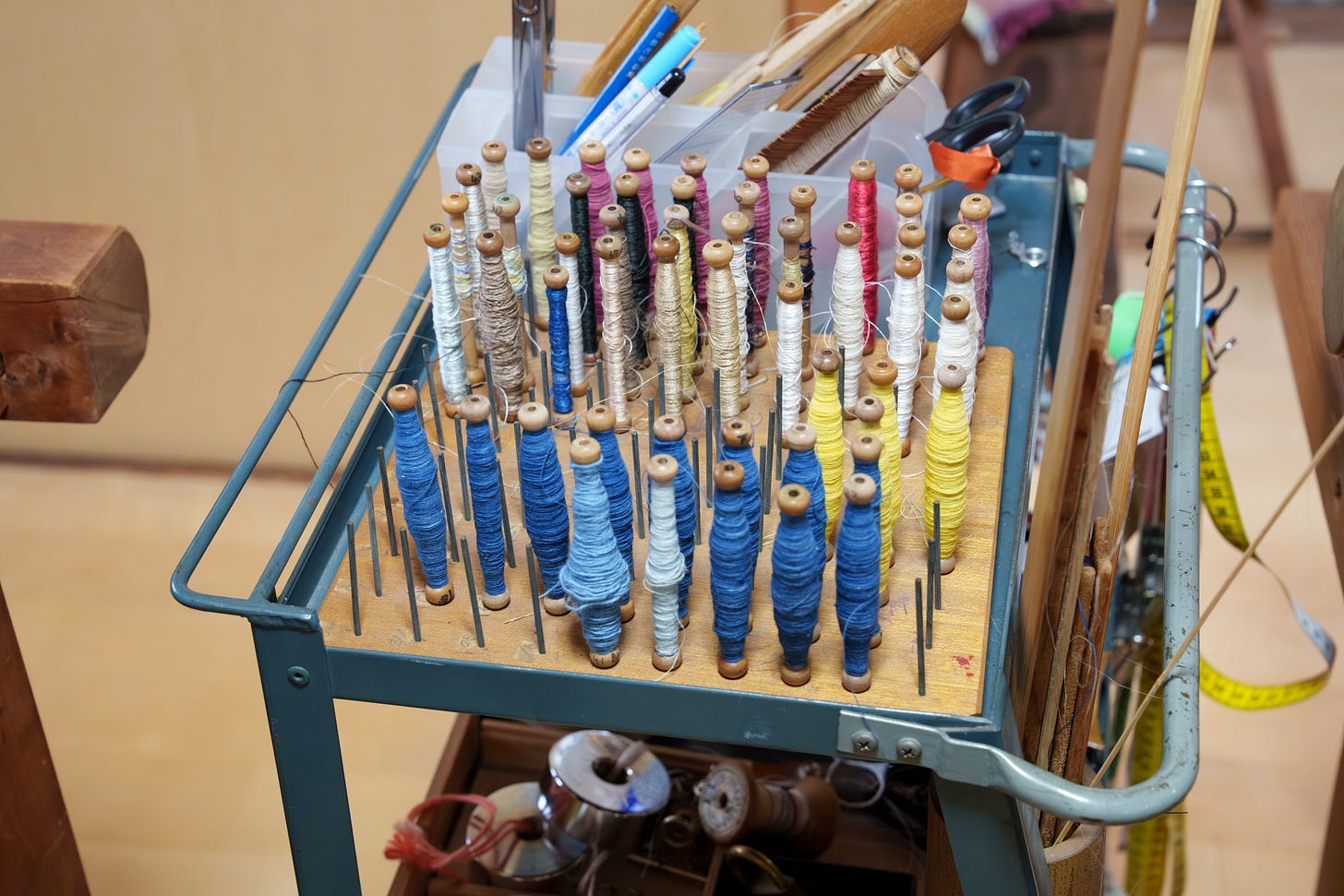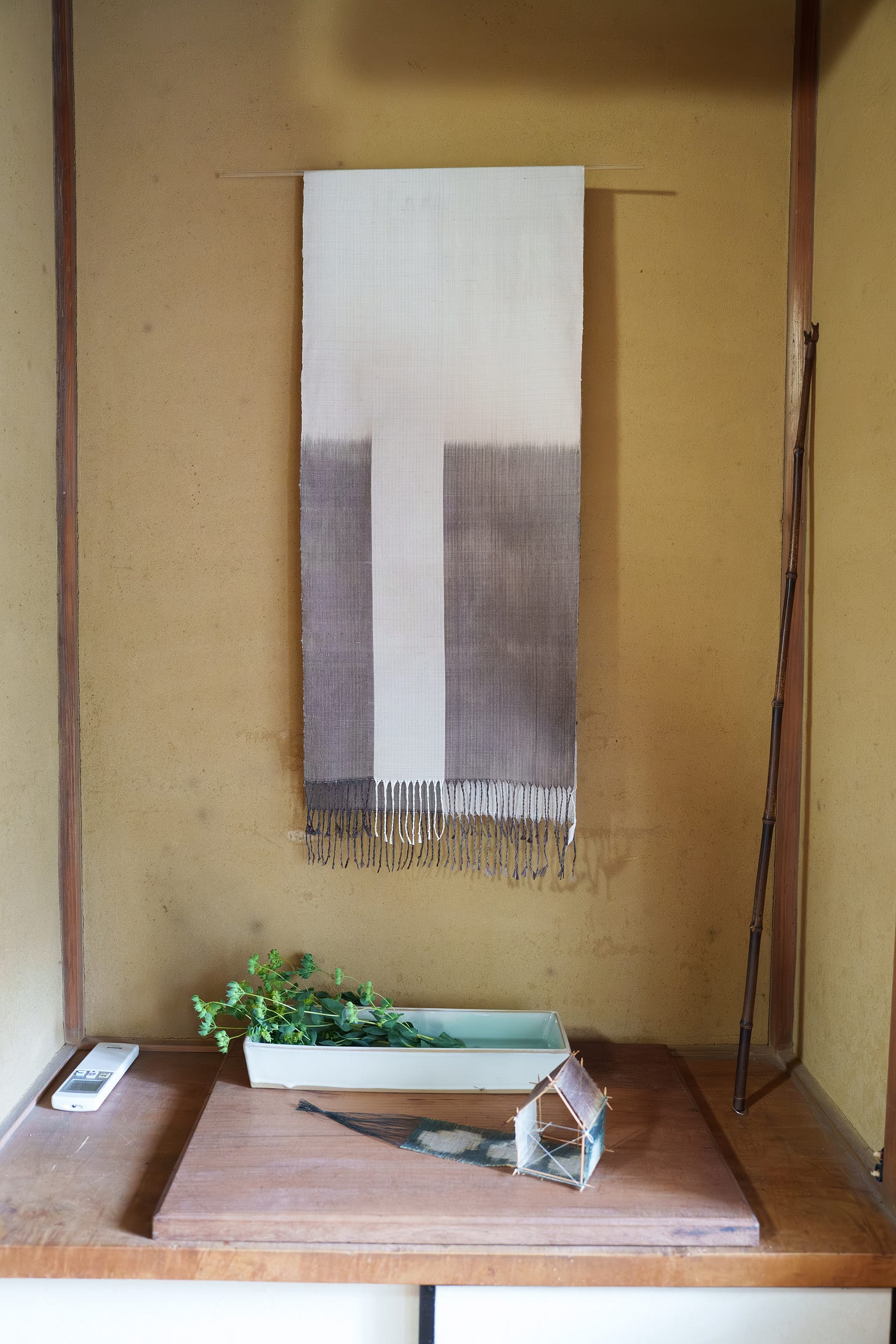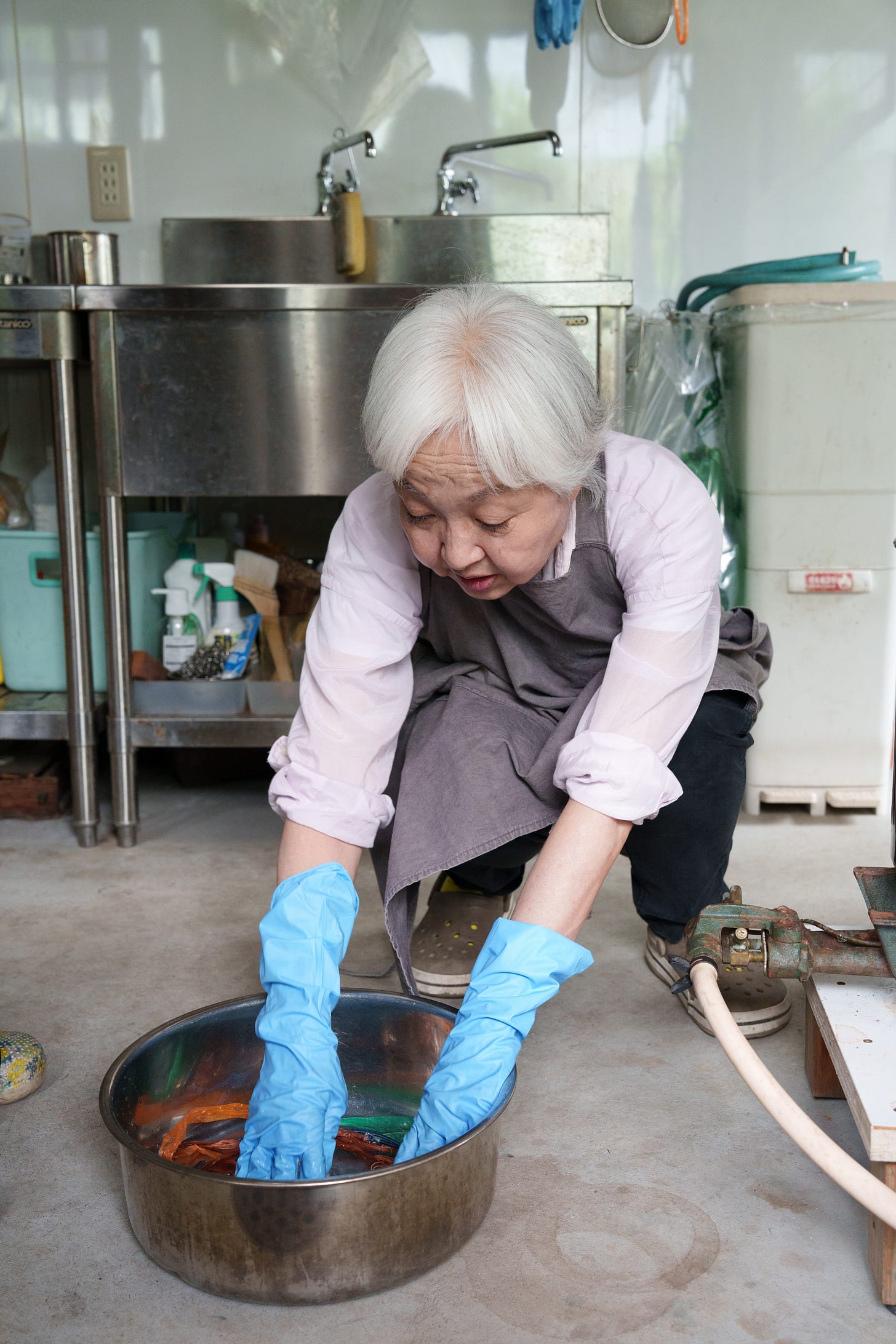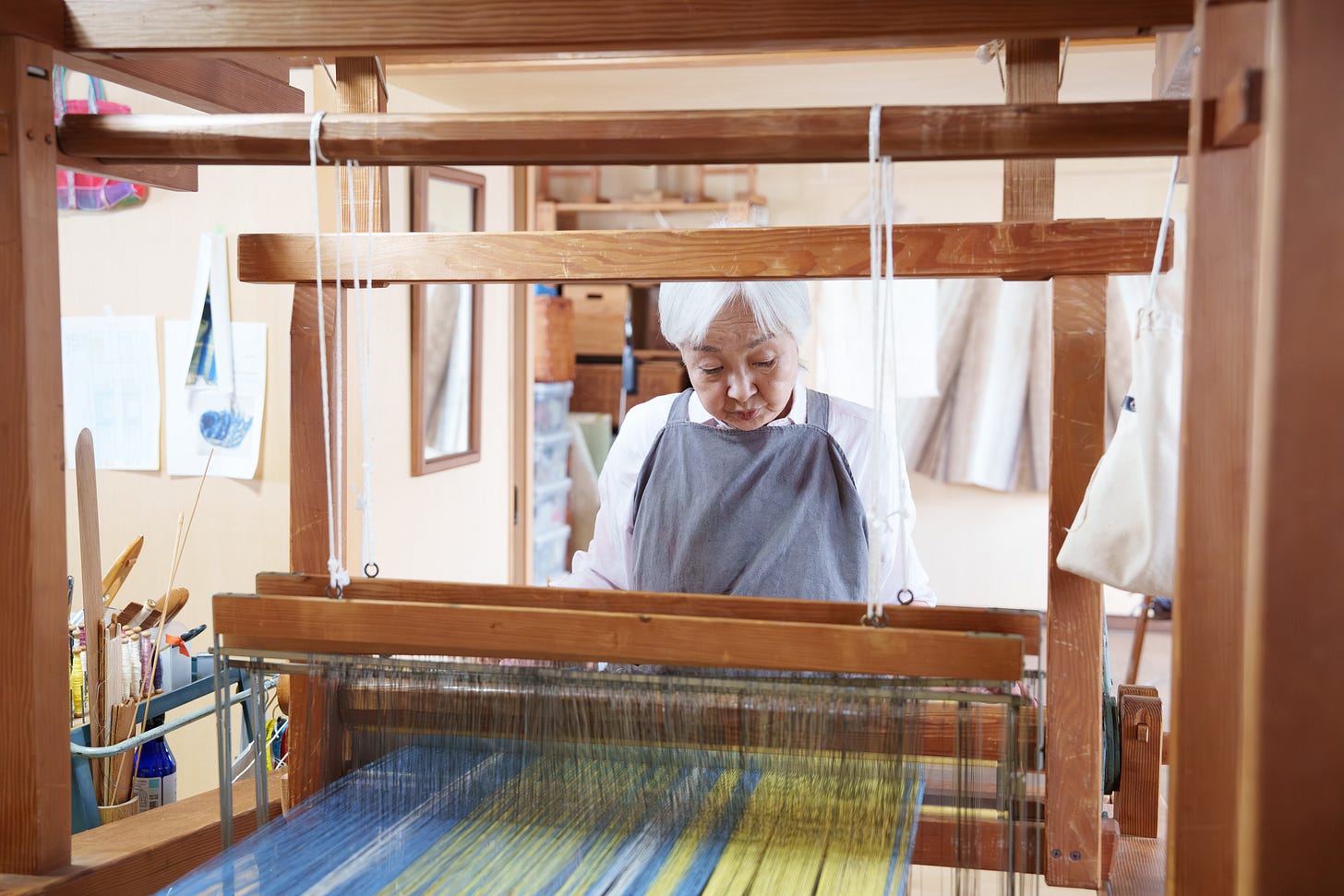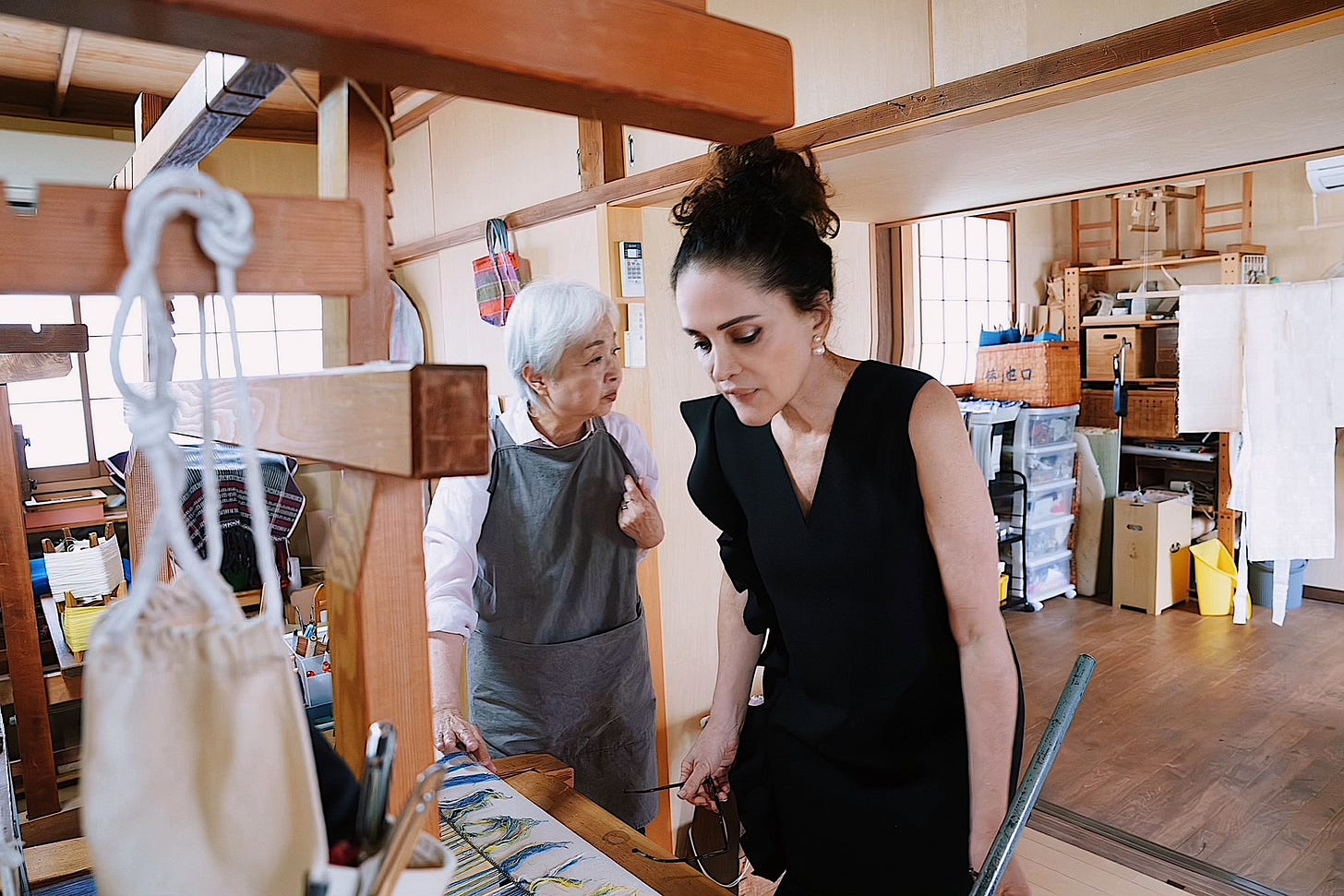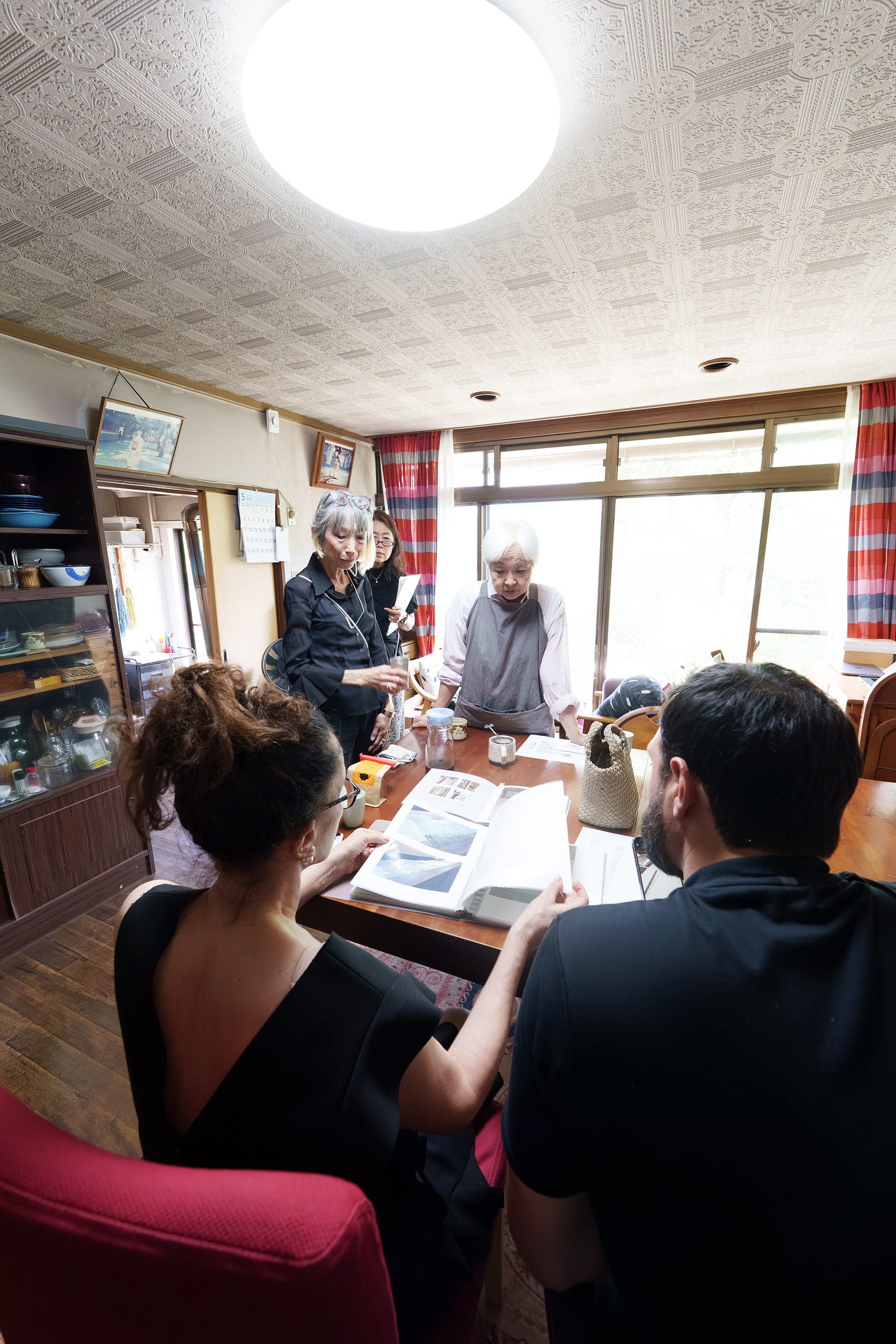Japan's New Craftspeople: Yoriko Murayama
Weaving Abstract Architecture
Yoriko Murayama (b. 1959).
In the landscape of Japanese contemporary textile art, where artists are drawing from rich traditions and infusing ancestral techniques with modern tools, technologies, and narratives, Kyoto-based textile and visual artist Yoriko Murayama’s oeuvre stands out for merging architecture with weaving, as she constructs links between fiber art and the built form in the freshest, most unique way, while at the same time, expressing her personal memory. Murayama’s masterful fiber artwork is remarkable in the way she expands the boundaries of fibers using the most labor-intensive and historically significant dyeing and weaving techniques. From the very beginning, she told me she was interested in the magical evolution and in the way textile art is emerging, from dyeing single, one-dimensional threads to weaving them into two-dimensional fabric on a loom, and then in transforming them into three-dimensional sculptures. Visiting her studio and watching her at work as she turns the thinnest, most ordinary silk thread into magnificent sculptures was mind-blowing.
Contemporary textile art in Japan is fascinating, serving as a marker of Japanese culture and taste, while generating tremendous interest from curators, galleries, and collectors worldwide. In the past, before artistic efforts shifted to visual art, the finest handmade textiles were created for customary dress, particularly for the kimono, Japan's national costume and quintessential symbol. Yet, just as the tea bowl has become the touchstone and point of departure for Japanese clay artists, so the kimono has become the inspiration for contemporary textile artists in Japan. Murayama, too, began her career weaving kimonos using the same ancient technique she applies to her art today. She is passionate about expressing herself through traditional techniques, and her work is exclusively handmade. When selecting raw materials, although she may use cotton for scarves, she uses only traditional Japanese materials, such as silk and ramie, for her art, after the artists who created the best kimonos in history.
To her, the art of the textile is a means of expressing memories and identities. She set up her studio in her mother’s house, the same house where she grew up in the suburbs of Kyoto. Murayama graduated from the Kyoto University of Art in 1983 and began her career by weaving kimonos. However, after eight years, she gradually began to transform the technique she learned into forms of art. Her sculptures in the form of houses were among my favorites. They take the form of simple houses, similar to those drawn by children, and their design is meant to evoke memories and nostalgia. To me, it certainly evoked memories of my own childhood in a tiny town in Israel, where the houses were white with red tile roofs, before most of them were transformed into the enormous modernist mansions they are today. Even if you are not from Japan, there is something universally nostalgic about her forms, , and it is precisely what she seeks to remind the viewer: nostalgia. ‘The small house,’ she told me, evokes memories of distant towns and landscapes, scenery of the past and the world before it changed, like a photograph.
Murayama’s abstract sculptures are refined and elegant beyond words. Some of them occupy entire rooms; others take the form of a kimono. She has a sense of color and form which is rooted in the powerful Japanese aesthetic sensibility. But her work also contains narratives, adding a personal touch and fresh dimensions to her art. She tie-dyes the fibers in a small area of her house designated for that purpose, using natural dyes from plants she picks in the wild fields. When I visited her, she used cooked chestnut shells to achieve a warm, rich, reddish-brown color. When the fibers are ready, she begins weaving, using vintage looms that fill the second floor, employing the ancient technique of kasuri. While this method had been typically and historically utilized for daily clothing and scarves, in her hands, kasuri is elevated to a tool for forging powerful art installations. Karuri is the Japanese term for fabric woven with tie-dyed fibers, resulting in blurred and brushed patterns, similar to ikat dyeing. Since arriving in Japan from Southeast Asia in the 17th century, it has spread across the country, but has declined with the rise in labor costs. Contemporary craftspeople have recently rediscovered it.
In her poetic textiles, the changing of colors and shades embody the landscapes of her childhood, and the fading patterns capture the fading memories. Her forms, too, whether houses, tents, or clothing, always represent both collective and private memories. Like an origami artist, Murayama never cuts the fabric, but rather folds and manipulates the hand-woven piece into objects and installations. She wants to create them in one piece, just like the construction of kimonos. ‘I believe the original role of cloth for humans was to protect us from the outside world,’ she told me, just as I was leaving the studio, ‘like fur and leather for wild animals, because it has a history of integrating with people from ritual, decorative, social, and cultural perspectives. ‘Shaping it into three-dimensional forms or installations feels like cooking, while kasuri is the spice.’ I love the analogy
Photography by © Takuro Kawamoto.





